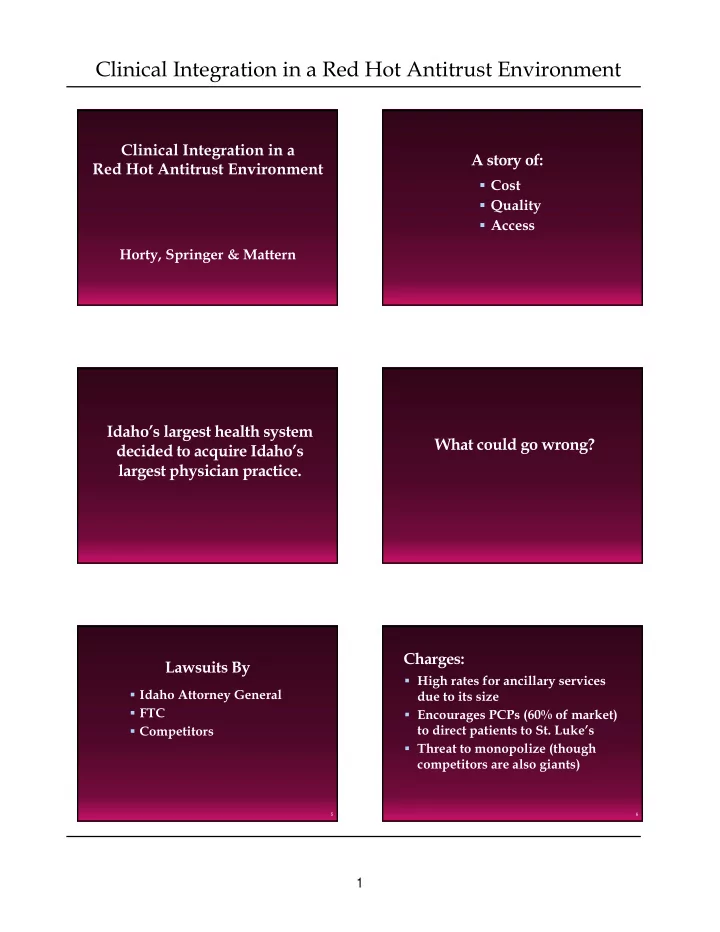

Clinical Integration in a Red Hot Antitrust Environment Clinical Integration in a A story of: Red Hot Antitrust Environment Cost Quality Access Horty, Springer & Mattern Idaho’s largest health system What could go wrong? decided to acquire Idaho’s largest physician practice. Charges: Lawsuits By High rates for ancillary services Idaho Attorney General due to its size FTC Encourages PCPs (60% of market) Competitors to direct patients to St. Luke’s Threat to monopolize (though competitors are also giants) 5 6 1
Clinical Integration in a Red Hot Antitrust Environment Defenses: Doctors not employed; could quit JUDGE RULES ST. LUKE’S and work with competitors MUST GIVE UP SALTZER anytime MEDICAL GROUP No non-compete agreements No obligation to refer only to St. Luke’s January 24, 2014 7 1. Would create too much power 2. Would have 80% of PCPs in over payers. Nampa. Summer 2014 3. Judge commented on how Appeal to 9 th Circuit Advances expensive health care is, despite its failure to match that with high quality. 2
Clinical Integration in a Red Hot Antitrust Environment Antitrust All “unassigned patients” In a Medical Staff Setting? to hospitalists? All hospitalists must meet: Daily/early rounds PMG must refer See patient within 45 minutes of internally? arrival CPOE Rules Discharges by 11:00 a.m. … Antitrust Laws The antitrust laws protect Assumption: Competition will competition, not competitors. yield lower prices, increased output, and/or higher quality. 3
Clinical Integration in a Red Hot Antitrust Environment Just because government policy Just because it makes good promotes integration doesn’t business sense doesn’t mean you’re allowed to do it. mean it’s legal. Sherman 1 (15 U.S.C. §1) Prohibits: Critical Element: Contract, combination or conspiracy Collective Behavior Unreasonable restraint of trade Per Se Violations Market allocation Per Se vs. Rule of Reason Price-fixing Group boycott 4
Clinical Integration in a Red Hot Antitrust Environment Antitrust Enforcers Can: Result Enjoin arrangement 1996 Guidelines: Prosecute Clinical Integration Sculpt Tips for Heading Off Legal Issues Commonwealth v. Partners Develop Rationale: Cost, Quality, Access Do not meet with competition without Healthcare System counsel Engage timely government, payers The Rodin of Antitrust Remember, loose lips invite/extend Enforcement litigation Ban email or any other indelible communication that does not require thinking! 28 5
Recommend
More recommend